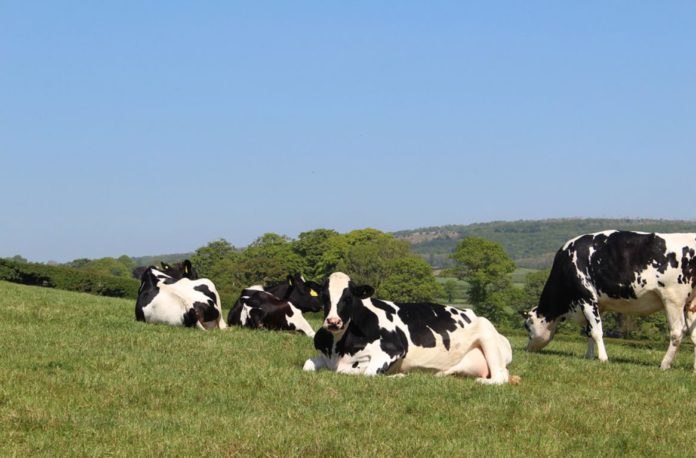In this article, Richard Gibson of CAFRE focuses on dry cow management. He outlines how farmers can reduce the risk of dry period infections developing, hygiene, using milk recording data and dietary requirements.
Farmers with autumn-calving herds will be starting to dry off cows.
Ensuring the correct management of cows at drying off and during the dry period is critical. This ensures the best possible start in the subsequent lactation.
Dry cow management
Any mistakes in the management or procedure can have consequences that will dramatically outweigh the cost of a good dry cow management plan.
Cows should be condition scored regularly. You should take measures before dry off. This will allow you to maintain cow condition in a steady state during the dry period.
Ideally, cows should be given no more than 15 litres per day at drying off. This reduces the risk of dry period infections developing.
Milk yield leading up to drying off can be decreased by reducing concentrate feeding, but this may add stress to the cow. Milking should be stopped abruptly.
Milking cows less than twice a day before dry off can increase somatic cell counts dramatically and the risk of new infections.
It can also delay the formation of the keratin plug after the cessation of milking.
A high proportion of all early lactation mastitis cases originate from the dry period but do not often show as mastitis cases until the next lactation.
In terms of the drying off procedure itself, hygiene is critical. Cows should be dried off as a separate job outside of milking.
These small steps can make a big difference:
- Washing down the parlour before the cows enter;
- Using clean gloves;
- An extra pair of hands.
Milk recording data, diet and internal teat sealants
Furthermore, you should use milk recording data to guide selective dry cow decisions. All cows should receive internal teat sealants.
They effectively prevent new infections, particularly during the high-risk period after drying off and just before/around calving.
Cows should stand for 30-minutes after drying off before being moved to a bare paddock or poor quality silage for a few days to allow the udder to dry off.
House all cows and feed them a bespoke dry cow diet in the last three weeks before calving. This will maximise colostrum quantity/quality and minimise milk fever risk.
The early dry period can be a convenient time to treat cows for parasites and administer annual vaccines following veterinary advice.
Read more technical articles from CAFRE.





